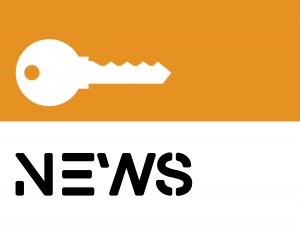NEXT-GENERATION ENGAGEMENT PLATFORMS, AND HOW THEY ARE USEFUL RIGHT NOW (PART 1)
 The COVID-19 pandemic rather abruptly eliminated some of our traditional methods of engaging large groups of people. Canvassing, rallies, and large public events have either been taken entirely off the table or drastically reduced in size. The long-established contours of board meetings and public hearings have been ground down by distancing and remote participation, and governing bodies like Congress are struggling to adapt. Not even the fiercest Team Digital advocates ever sought this aggressive a shift to online channels. Our campaigns, governments, and civil society institutions will soon suffer from the lack of face-to-face conversations, if they aren’t already.
The COVID-19 pandemic rather abruptly eliminated some of our traditional methods of engaging large groups of people. Canvassing, rallies, and large public events have either been taken entirely off the table or drastically reduced in size. The long-established contours of board meetings and public hearings have been ground down by distancing and remote participation, and governing bodies like Congress are struggling to adapt. Not even the fiercest Team Digital advocates ever sought this aggressive a shift to online channels. Our campaigns, governments, and civil society institutions will soon suffer from the lack of face-to-face conversations, if they aren’t already.
This, of course, isn’t preventing people from staying in touch with those they already know. On The Energy Gang podcast, clean energy advocate Katherine Hamilton recently commented that in Washington, DC, lobbyists with existing relationships are still getting time with members of Congress to communicate their message, but that it’s a very hard time for someone trying to build new relationships to do so. Our collective space for new conversations and relationships has been severely curtailed while we figure out how to use videochat to fill that hole in our civic lives.
How do I engage a constituency right now?
Like many others in our field, I’ve been thinking about how digital public engagement platforms can promote more responsive and accountable governance. Today’s radically altered context opens the opportunity to see if they might help. If there is ever a time to to learn what works for remotely engaging a constituency, this is it. I’ll present a handful of next-generation platforms here and discuss how they might help share power, debate, and arrive at meaningful consensus, even when we can’t look each other directly in the eye.
Engagement platforms have always been designed to engage the public at large, like governments might seek to do. They’re the bread-and-butter of what many people mean when they talk about “civic tech,” and can be used by organizations, campaigns, and governments to engage their staff, membership, or constituencies. All of the examples I’ll discuss here are available for civil society and political campaign uses as well.
These platforms are almost purpose-built for our socially-distanced times. They work asynchronously, so people can participate when their schedules allow. They also work over short or great distances.
When I call them “engagement platforms,” I mean these platforms truly engage people. Social media metrics have diluted our idea of engagement, just like the platforms diluted our idea of friendships. The platforms here enable behaviors that go beyond “likes.” Their designers have connected their software features to real-world levers of power, so that when they talk about empowerment, they really mean someone gets power as a result of the process.
I refer to them as ‘next-generation’ engagement platforms because they’re constantly pushing the envelope of how people can engage over digital means. Any app can bolt on upvoting, comments, and polls. These platforms use AI to help parse huge volumes of feedback without obfuscating the original messages posted by participants. They use nudging behaviors — small design choices that add up to improved outcomes — to ensure those on the powerful end of a relationship actually respond, and complete the loop with the constituent. They’re experimenting with ways to let a petition signer validate their address as a constituent without exposing that data to authorities.
Some of these platforms have been up and experimenting for over a decade, so they’ve been through several waves of crowdsourcing fads, and honed in on what truly motivates institutions to be more responsive.
In this post, I’ll cover a set of open source engagement examples that have been developed by civic technologists in partnership with governments. In the next post, I’ll present examples developed by for-profit social benefit corporations. The open source platforms are a good solution for governments, organizations, and campaigns with access to technical staff, because installing, hosting, maintaining, and updating one of these platforms usually requires a fair amount of technical skill.
Smaller groups and campaigns without strong technical teams might benefit from some of the private platforms, which are hosted software-as-a-service solutions. The annual cost of most private sector platforms is significantly less than the salary for a single software engineer in many labor markets, and usually includes hosting, some level of help and support services, and automatic updates and improvements.
Source: Civic Hall, by Matt Stempeck
Tags: digital engagement, diverisity, Public Engagement, resources, Spain, tools






